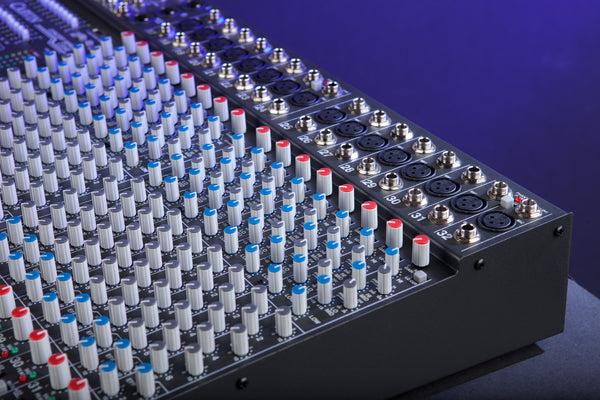-
Audio
-
Guitar
-
Bass
-
Blog
-
SALE
- Financing
- Support
- SINCE 1946
November 11, 2015
Patience and Practice, if you want to learn to use EQ and adjust EQ in a venue for a live concert or a recording, are the two attributes you absolutely need. If you lack these, we suggest you develop them in a hurry otherwise your sound will be an earful. Anyone working in audio absolutely needs to develop this fundamental skill, yet many people struggle with EQ. We have put together a few general tips to get you started or to fine-tune your EQing abilities.

Frequency Search
An experienced audio person has a knack when it comes to finding the correct frequencies to fiddle with in a room, which is the basis of EQing. Discovering the right frequency to fix, however, can get complicated for a beginner or if you have to deal with new or unusual sounds.
To start, you need to find an EQ permitting you to manage the targeted frequency. To find it, increase one band to its highest level. Afterwards, play a sound and carefully check the frequency from top to bottom till you locate the spot where the tone you want sounds the loudest. Record the frequency and go back down to zero on your EQ. You are now aware of the frequency where your intended tone strikes; therefore you can boost or cut as required.
More Cuts, Less Boosts
Without getting overly technical, cuts are more desirable than boosts when you want to EQ a room or venue. Extreme boosts in a mix will likely cause muddiness and harm sound clarity. Boosting can bring about a phasing issue, another reason why you would want to keep boosts to a minimum when you EQ a room. Phasing issues are encountered when sound waves are not aligned properly, resulting in undesirable effects on your tones.
Where to Cut and Boost
An unwritten rule when it comes to EQing is it’s better to utilize a high (narrow) Q when cutting and a low (wide) Q when boosting. This will allow you to maintain the subtleness of your sound.
Think it Through
Before you begin playing or recording you have to analyze what you want to accomplish with your instrument and exactly how it will react with the sounds around it. For instance, an acoustic guitar with a full sound will be masked in a 10-instrument band and cause the overall sound to be muddy, but will sound rich in a two-instrument setup. The two situations will require different setups. Ensure you plan your tones appropriately before your start playing by taking into account all the sound variables.
Remember the Purpose
If you are trying to EQ a band, remember individual instruments don’t need to sound fantastic on their own (unless there’s a solo planned in the song). The characteristics ensuring an instrument sounds tremendous on its own are frequently the ones making the instrument’s music problematic in a band set-up. Don’t waste your efforts finding the perfect sound of an instrument when played solo, but rather find the right setup for the mix.
These are a few little tips to guide you when you want to work with EQ for a live concert or for a recording. Your best training technique though is experience. Don’t be afraid to delve into EQing even if you feel completely overwhelmed at first. It is quite normal and it is more of an art than a science (although science does play an important part). Making mistakes will help you identify what works and what does not. Try different strategies to find the ones you are comfortable with and which help you get the best results. There is not a single right method to EQ, therefore, find a technique which works for you as long as the results sound excellent.
November 11, 2025
"This Is An Underrated Sound System!" DJ Tech Tips reviews the Carvin Audio TRC400A 4000W Powered Column Array System in this video.
October 13, 2025
Carvin TRC Active Column Array System features and setup video. Watch this video to discover the features and benefits of our active column array sound system. TRC Powered Column Array Systems offer portability with high SPL levels that project up to 400’ with exceptional clarity. Unsurpassed high frequency and deep bass response will place the audience in the center of your performance. TRC Systems are scalable and are available in 2000W, 4000W, and 8000W models.
June 18, 2025
Carvin Audio teams up with Red Bull to provide audio for the VIP experience in Des Moines for the 2025 Soap Box Race Iowa. The TRC Active Column Array System was used for the event.
Sign up to get the latest on sales, new releases and more…
NoFraud Frequently Asked Questions
"Make a joyful noise unto the Lord all of the earth; make a loud noise and rejoice and sing praises. Sing to the Lord with the harp and the voice of the psalm." - Psalm 98:4-5
© 2025 Carvin Audio.
Carvin Corp.
POS and Ecommerce by Shopify
